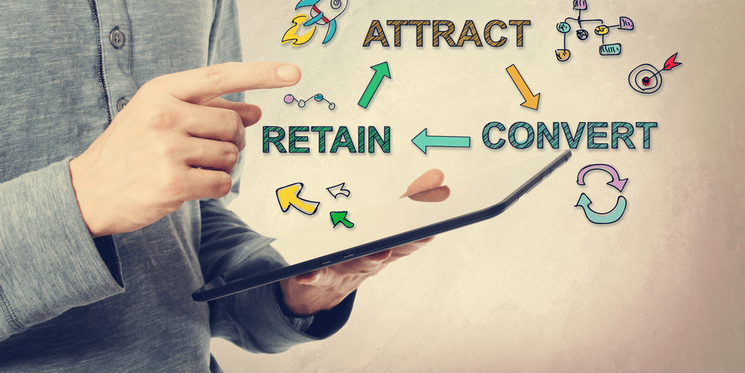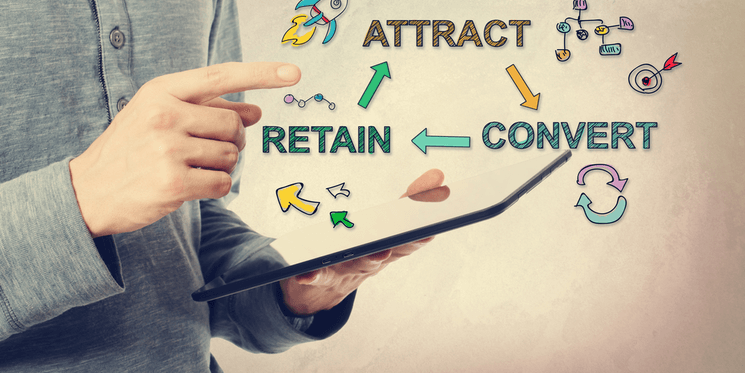 Most companies are quite rightly, focused on sales. But they often concentrate on searching out new customers to get those sales – ignoring the easier and more lucrative market right on their doorstep – existing customers.
Most companies are quite rightly, focused on sales. But they often concentrate on searching out new customers to get those sales – ignoring the easier and more lucrative market right on their doorstep – existing customers.
Did you know you have a 60-70% chance of selling to an existing customer? That’s versus 5-20% of selling to a new prospect.
So the first reason for selling to existing customers is that it’s an easier sell.
It’s cheaper too – research shows that it’s between 5 and 25 times more expensive to acquire a new customer than it is to retain an existing one.
With the recent introduction of GDPR, getting new customers may even prove more difficult and more expensive.
Selling to existing customers seems too good to be true. Easier and cheaper? What’s the catch?
Well, the main issue is how you go about it. You want to maximise revenue without driving your customers away.
So how can you grow your business without losing the business you already have?
Relevance
The key to successfully selling to your existing customers is relevance. If you can introduce them to products and services that would actually benefit them – then they are going to be easy to win over. Trying to force products and services onto a customer that they don’t need is the fast track to losing them forever.
And how do you ensure your selling is relevant?
Through a deep knowledge of your customers – their needs, drivers, issues and problems. By having a thorough understanding of their roles, their business and their environment. And by making sure your CRM system is kept up to date to provide you with reliable data and actionable insights about your customers.
Timing
Another important factor is timing. You may be able to upsell at the point of purchase – getting the buyer to go for a premium option rather than the standard option for example - but immediately after purchase is not usually a good time to try further selling.
If you wait until the customer has used the product or service for a while and seen good results, then you can suggest upgrades, extras, and additional products or services.
This implies that you are keeping in touch with your customer and monitoring their customer journey. It’s worth mapping out that journey ahead of time, so you know what to offer them and when.
You will need to spend time planning and thinking – putting yourself in your customer’s shoes and looking at what their future needs might be. Listen to them and get feedback from them whenever possible and appropriate.
Another aspect of timing is your speed of response. You need to be able to react to a customer’s changing circumstance and not miss a window of opportunity – whether that be a change of fortune, a budget surplus, or a sudden need.
Be ready to aid your customer. If they see a sudden opportunity in the market and they need to move fast, make sure you can move fast with them.
Consultancy
A golden rule for a healthy, successful long-term relationship with a customer is to never sell them something they don’t need. When they are being particularly receptive it might be easy to persuade them to buy that extra widget, that extra service or that expensive upgrade – but if you erode their their trust they will be highly unlikely to listen to your advice again.
The salesperson should think of themselves as a consultant – listening to the customer, anticipating their needs and always acting in their best interests. After all, if your customer does well – then you are likely to benefit too.
An open approach
When you do identify an opportunity to sell a product or service, don’t tell the customer they need it, suggest it to them; “Would it be helpful if…” or “Do you think this would be of use in this situation?”
Ask them if they are happy for you to work with them to identify suggestions for improving their process, efficiency or profitability. Approached in the right manner, not many clients would say no to what is effectively free consultancy and advice.
Always be proactive – demonstrate that you really are looking after your customer’s best interests. Don’t wait for them to ask you about a product or service – suggest it to them the moment you think it’s becoming relevant to their future planning.
Demonstrate Value
Always be prepared to demonstrate the value to the customer. If you have done your homework then there should be some benefit to them that you have identified before you approach them. If you can outline possible cost-saving scenarios with projected figures, or perhaps percentage efficiency increases, then that’s going to help your case.
The great thing about working with existing customers is that you should have way more data and information on their needs than you would ever have on a prospect.
Encourage them to do their own reporting on their use of your products and services to demonstrate ROI. If they can’t or won’t, then offer to do the reporting for them. Conduct your own reviews periodically to show progress and benefits.
Watch their competitors
Always keep an eye on what your customer’s competitors are doing and the products and services they are buying. In your role as consultant to your customer, you can advise them of new processes and techniques that they should be aware of.
You may also identify products and services that you can supply to help your customer stay competitive.
And don’t underestimate the power of peer pressure. Just informing your customer of a competitor’s activities might spur them to upgrade or increase their spending budgets.
Remember the basics
Always make it easy for the customer to contact you by any method – but especially by the method they prefer. That could be a phone number on the website or through social media or messaging systems.
Make it easy for the customer to buy and to add extra services or products at any time, by making their account management simple and the purchasing process as streamlined as possible.
Customer support is vital for sales
Exceptional customer support is essential if you want to increase your sales to existing customers – no one is going to buy from you if they have issues with their use of your product or service.
Equally important is training and support in using your products and services. You want your customers to get the best possible use out of them so that they can see their worth and enjoy the benefits. The more they get out of them, the more likely it is they will buy more.
Creating and publishing great content helps with this – supporting and educating your existing customers as well as drawing in new leads. Make sure there are plenty of support materials, tutorials and troubleshooting guides online too.
Make good use of existing customers
Once you have happy customers, make good use of them by encouraging them to provide testimonials, to be the basis of case studies and interviews, and even for them to provide content in the form of guest articles and presentations.
Make it easy for them to share your content on social media and support them with content, resources and consultancy when they create their own content.
Mutually assured success
Existing customers if nurtured, developed and genuinely supported can be a reliable and long term source of growth for any business.
The key is to know your customer and have their best interests at heart. By selling them solutions that they actually need you'll help them to grow. And in the process you'll be creating long-term relationships that work for both you and your customers.


